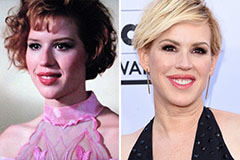Dressing well is a practice that transcends mere clothing selection. It's about projecting your personal style while reflecting confidence and taste. A carefully chosen wardrobe, balanced by the appropriate accessories, can have a remarkable impact on how you perceive yourself to the world. It's about embracing your individuality while observing the principles of style and proportion. Ultimately, dressing well is a journey of expression, one that allows you to highlight your unique flair.
A Guide to Choosing Dress
Embarking on a quest for the perfect dress can be an exciting yet daunting task. With so many designs available, it's easy to feel overwhelmed. Fear not, this guide will equip you with the essential tips and tricks to successfully navigate the world of dresses and unveil the ideal that speaks to your unique taste.
- Start by identifying the occasion. Is it a formal event, a casual gathering, or something in between? The occasion will heavily guide your dress choice.
- Secondly, evaluate your body shape. Different shapes flatter different body types.
- Most importantly, don't be afraid to experiment!.
Keep in mind that the most important thing is to select a dress that makes you radiate joy.
Fashion Trends in Dresses rule
This cycle, the world of dresses is brimming with bold trends. Maxi silhouettes continue to be beloved, often crafted from delicate fabrics like chiffon and silk. A revival of vintage styles is also in full swing, with flapper waistlines making a dramatic comeback.
For those seeking a more edgy look, tailored dresses with bold color blocks and abstract prints are making waves. Shoes play a key role in completing these looks, with chunky boots adding an element of power.
Regardless your personal style, there's a dress trend to suit every taste this year. From romantic florals to minimalist silhouettes, the possibilities are truly infinite.
Dresses Through the Ages
Throughout the course of centuries, dresses have transformed dramatically, showing the economic norms and artistic trends of each age. From the flowing gowns of ancient civilizations to the fitted silhouettes of the Victorian epoch, dresses have always been a emblem of femininity and status.
Throughout the 20th century, dresses embraced innovation with the website introduction of new fabrics like satin and styles that were more versatile. The cropped length of the 1960s and the free-spirited styles of the 1970s displayed the liberation of women.
- Modern dresses continue to change, mirroring the range of individuality.
Sustainable Dressmaking Practices
In the realm of fashion, embracing/adopting/implementing sustainable dressmaking practices has become increasingly crucial. This involves selecting/choosing/utilizing eco-friendly materials like organic cotton or recycled fabrics, minimizing textile waste through careful pattern cutting and efficient/optimized/strategic use of fabric scraps. Furthermore, supporting/patronizing/encouraging ethical labor conditions throughout the production process is paramount to achieving/realizing/attaining truly sustainable garment creation. By integrating/incorporating/embracing these principles, dressmakers can contribute to a more eco-conscious/environmentally friendly/sustainable fashion industry.
A Look At Of Wearing A Dress
Putting on a dress can be more than just a sartorial choice. Expresses a range of feelings and can affect our views of ourselves and the world around us. Psychologists believe that dresses can tap into deeply intrinsic aspects of our identity.
For some, a dress inspires feelings of power, while others associate it liberating. The texture of the dress, its hue, and even its design can influence to these associations.
- Moreover, cultural traditions also play a crucial role in shaping our interpretation of dresses.
- In some communities, dresses are considered symbols of celebration, while in others they may be associated with more professional occasions.
In conclusion, the psychology of wearing a dress is a intricate one, affected by a variety of unique and environmental factors.
 Ralph Macchio Then & Now!
Ralph Macchio Then & Now! Angus T. Jones Then & Now!
Angus T. Jones Then & Now! Molly Ringwald Then & Now!
Molly Ringwald Then & Now! Danny Pintauro Then & Now!
Danny Pintauro Then & Now! Kelly Le Brock Then & Now!
Kelly Le Brock Then & Now!